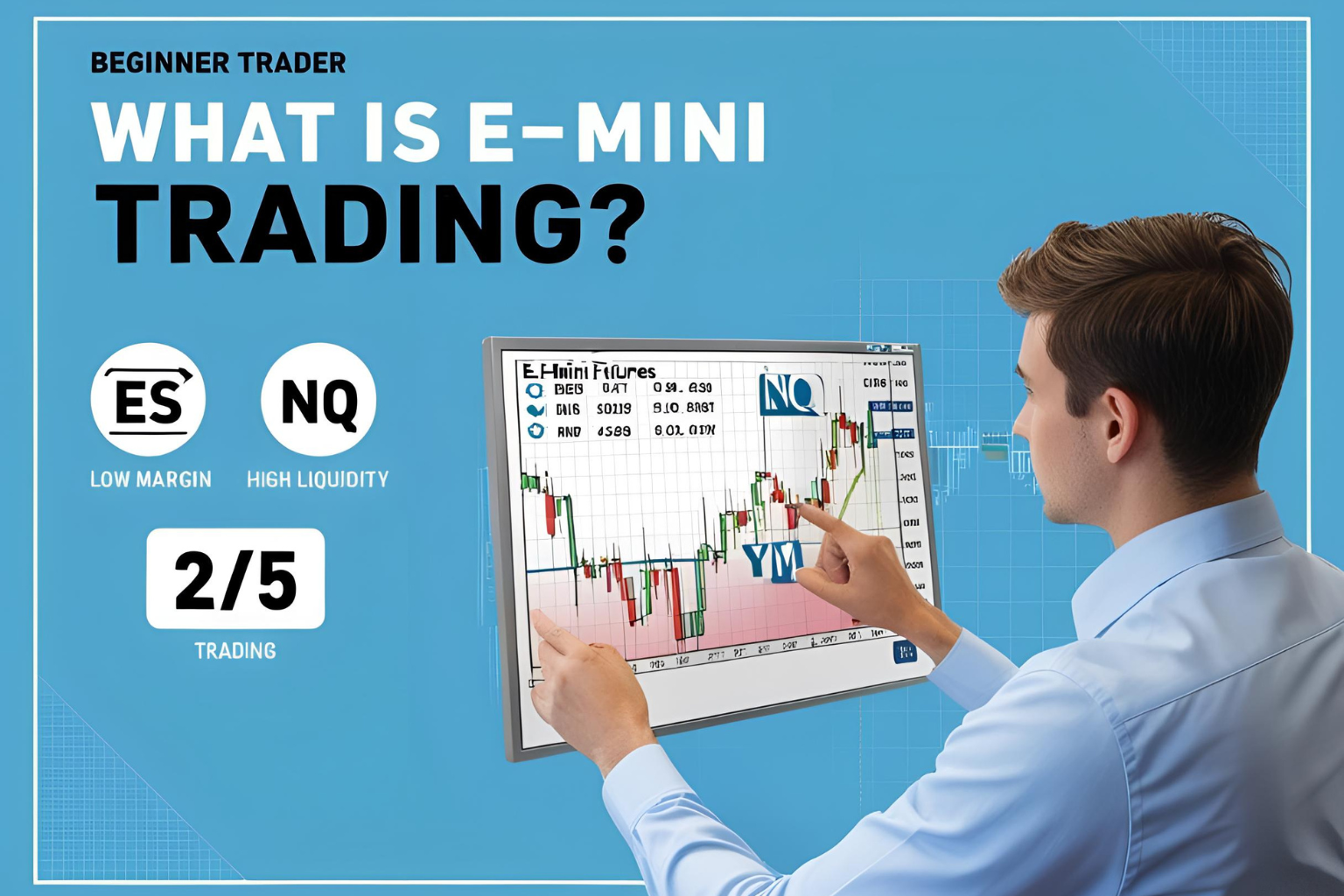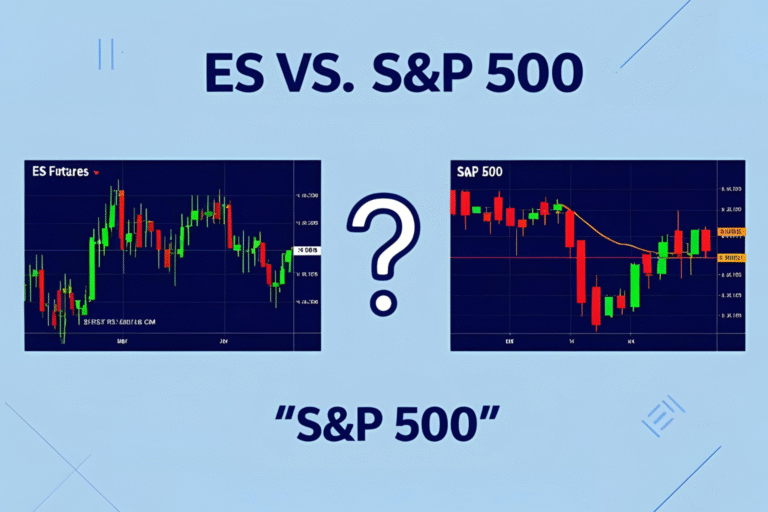What is E-mini Trading? A Beginner’s Guide
E-mini trading refers to buying and selling E-mini futures contracts, which are smaller-sized versions of standard futures contracts traded on the Chicago Mercantile Exchange (CME). They offer a cost-effective way to speculate on market indices like the S&P 500 and Nasdaq 100 with lower capital requirements. E-mini futures are among the most popular instruments for retail and professional traders alike.
In this guide, you’ll learn what E-mini trading is, how it works, and how to get started.
What Are E-mini Futures?
E-mini (short for “Electronic Mini”) futures are:
- Electronically traded
- Cash-settled
- Fractional-sized versions of full-sized futures contracts
They track major market indices such as:
- E-mini S&P 500 (ES)
- E-mini Nasdaq 100 (NQ)
- E-mini Dow Jones (YM)
- E-mini Russell 2000 (RTY)
Key Features of E-mini Contracts
| Feature | E-mini S&P 500 (ES) Example |
|---|---|
| Exchange | CME |
| Ticker Symbol | ES |
| Contract Size | $50 × S&P 500 Index |
| Tick Size | 0.25 points |
| Tick Value | $12.50 per tick |
| Trading Hours | 6:00 p.m. to 5:00 p.m. ET (Sun–Fri) |
| Expiration | Quarterly (March, June, Sept, Dec) |
| Margin Requirement | As low as $500 intraday (broker-specific) |
Why Trade E-mini Futures?
- Leverage
You can control large market positions with a relatively small amount of capital. - Liquidity
ES and NQ contracts are extremely liquid, meaning tight bid-ask spreads and fast order execution. - Volatility
The intraday price movement provides opportunities for scalping and day trading. - Extended Hours
Unlike stocks, E-mini futures trade almost 24 hours a day, offering more flexibility. - No PDT Rule
E-mini traders are not subject to the Pattern Day Trader rule found in stock trading.
How to Get Started with E-mini Trading
Step 1: Open a Futures Trading Account
Choose a broker like NinjaTrader, TradeStation, or Interactive Brokers that supports futures trading.
Step 2: Understand the Platform and Contract Specs
Get familiar with margin requirements, tick values, trading hours, and how to use your charting software.
Step 3: Start with a Demo Account
Practice placing trades, managing risk, and analyzing charts using a simulated account.
Step 4: Learn Basic Trading Strategies
Start with beginner-friendly setups such as:
- Breakout trading near key levels
- VWAP bounce or mean reversion
- Trend-following using moving averages
Risks to Keep in Mind
- Leverage can amplify losses as well as profits
- Market moves quickly, especially during economic news
- Overtrading can quickly erode your account
Always use stop-loss orders and risk no more than 1–2% of your capital per trade.
FAQs
What’s the difference between E-mini and Micro E-mini?
Micro E-mini contracts are 1/10 the size of E-minis. They’re great for beginners with smaller capital.
Can I trade E-mini futures with $1,000?
Some brokers offer intraday margin as low as $500, but $3,000–$5,000 is more realistic for proper risk management.
Is E-mini trading better than stock trading?
It depends on your goals. E-mini trading offers leverage and extended hours, but also comes with higher risk.
Do E-mini futures pay dividends?
No. Futures are cash-settled and do not involve ownership of underlying assets.
Are E-mini futures taxable?
Yes, but they may qualify for favorable 60/40 tax treatment under Section 1256 in the U.S.



